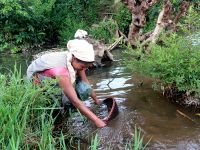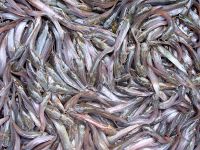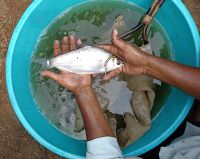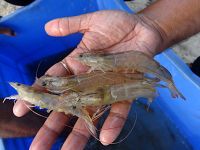Northeast India faces significant nutrition security challenges, particularly in rural and tribal areas, where high stunting and anemia rates persist despite high per capita caloric intake. This article explores sustainable freshwater snail farming as a viable solution to address these nutritional deficiencies while enhancing rural livelihoods.
Freshwater snails, such as Pila globosa, Bellamya bengalensis, and Brotia costula, offer high protein content and essential minerals, particularly calcium and iron. Their nutritional value surpasses many plant-based protein sources and compares well with traditional livestock products. The study outlines three practical snail farming systems suited to different farming conditions. Economic analysis reveals that a small-scale backyard system can generate up to 1,800 kg of snails annually, yielding a 272% return on investment within five months. With proper training, infrastructure, and market linkages, freshwater snail farming can play a useful role in improving food security, economic resilience, and rural development in Northeast India.
Indian aquaculture has expanded beyond major carps to include diverse species such as catfish, driven by high consumer demand for their taste, soft flesh, and live marketability. However, the sector faces a major challenge: the lack of captive seed production. Relying on wild seed collection is unsustainable, necessitating the development of controlled breeding techniques. This article provides an overview of induced breeding and seed production methods for key catfish species, including Clarias batrachus, Heteropneustes fossilis, Wallago attu, Ompok spp., Mystus cavasius, Rita chrysea, Horabagrus brachysoma, and Pangasius pangasius. By adopting these techniques, Indian fish farmers can enhance catfish seed availability, supporting the government’s push for aquaculture diversification. Sustainable captive breeding will reduce pressure on wild populations while ensuring a reliable supply of high-quality catfish seed for commercial farming.
Northeast India, a region rich in freshwater biodiversity, has significant potential for aquaculture development, yet faces challenges due to its hilly terrain, cold climate, and limited availability of suitable fish species. Indigenous minor carps, such as Labeo bata, L. gonius, Cirrhinus reba, Osteobrama belangeri, Bangana devdevi, and B. dero, offer a promising alternative to Indian major carps due to their adaptability to local conditions, shorter culture periods, and high market demand. These species perform well in lower temperatures, shallow waters, and seasonal ponds, making them ideal for sustainable aquaculture in mid- and high-altitude areas. Their omnivorous feeding habits allow for cost-effective diets, reducing reliance on expensive commercial feed. Expanding minor carp aquaculture will contribute to food security, economic growth, and the conservation of native fish species in Northeast India.
India's shrimp farming industry plays a crucial role in the national economy, with Penaeus vannamei dominating production and exports. Despite India being one of the world's largest shrimp producers, domestic shrimp consumption remains low. This article explores the economic significance of farmed shrimp, the challenges faced by shrimp farmers in West Bengal, and the potential for expanding the domestic market to enhance industry sustainability. Promoting farmed shrimp consumption within India is a viable strategy to stabilize the industry. Increasing consumer awareness of shrimp’s health benefits, developing efficient distribution networks, and leveraging marketing initiatives could enhance domestic demand. Government agencies, industry associations, and private enterprises must collaborate to establish shrimp as a mainstream protein source in Indian diets, thereby ensuring long-term sustainability for shrimp farmers.
This webinar will focus on artemia, a small brine shrimp found naturally in hypersaline ecosystems – salt lakes, salt pans and salt works across the world. Presenters will explain artemia’s unique role in the aquatic ecosystem and explore ways for future investment opportunities. The webinar will be held from 12:30-14:00 GMT on 11 March.
The shrimp has rare biological characteristics that enable it to thrive in saline environments under climate change stress, and special nutritional properties that have made it an essential product for fish and shrimp hatchery production across the world, contributing directly to the sustainable production of over 10 million tons of high-value aquaculture products. Artemia is also emerging as a unique product with applications beyond aquaculture hatcheries, and its potential in animal and human food production in climate-stressed ecosystems.




